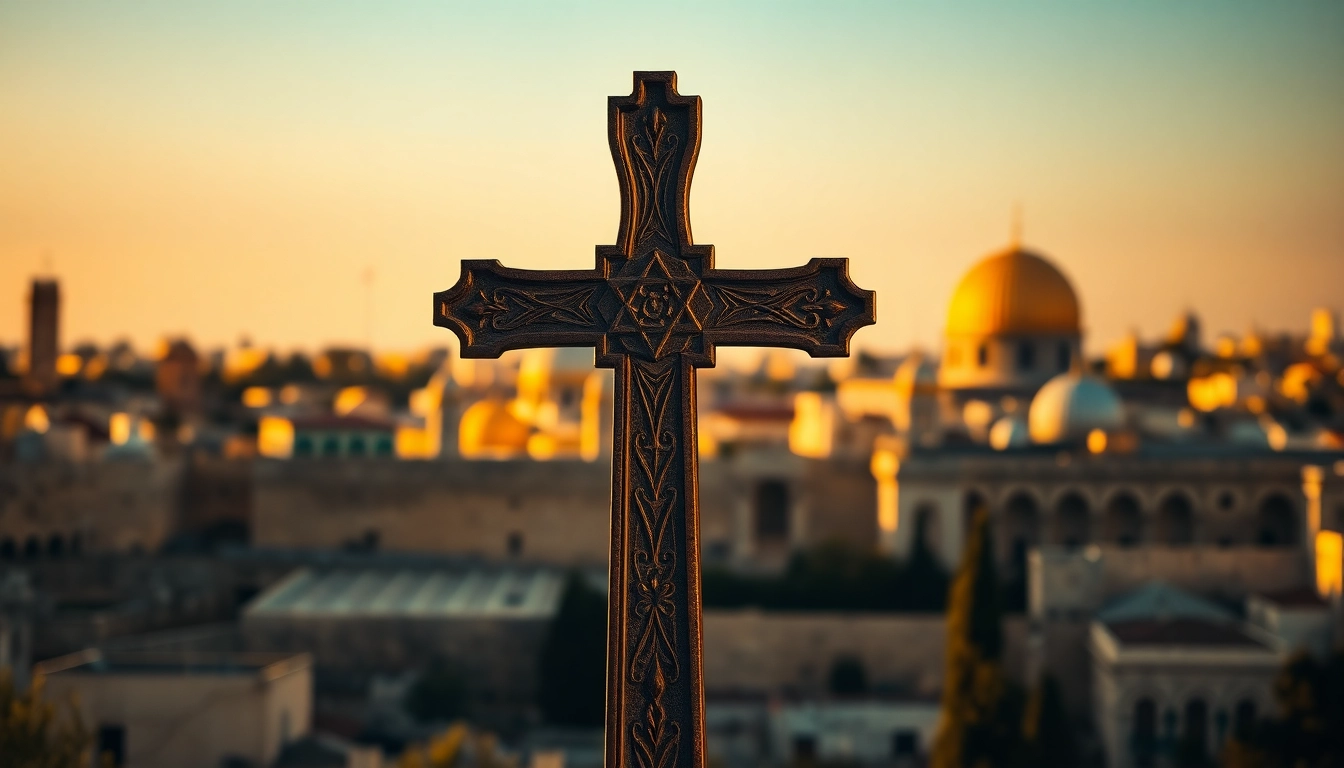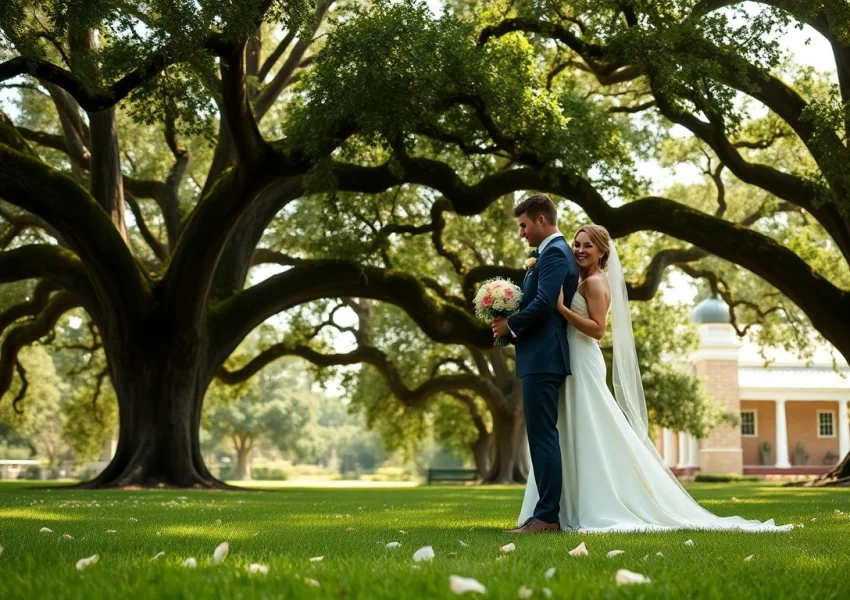Understanding the Jerusalem Cross
What is the Jerusalem Cross?
The Jerusalem crosses is a distinctive heraldic cross, consisting of a large central cross—known as a “cross potent”—that is surrounded by four smaller Greek crosses, each positioned in the quadrants created by the arms of the main cross. This design encapsulates a wealth of symbolism within its geometric configuration, which echoes the importance of the city of Jerusalem in Christianity.
Symbolism Behind the Jerusalem Cross
The symbolism of the Jerusalem cross is deep and multifaceted. At its core, the large central cross represents Christ’s sacrifice, while the four smaller crosses serve to signify the four Gospels—Matthew, Mark, Luke, and John—as well as the spreading of the Christian faith to the four corners of the Earth. This powerful imagery serves not just as an emblem of faith, but also as a reminder of the missionary work that flows from the heart of Christian belief.
Historical Origins of the Jerusalem Cross
Historical accounts trace the origins of the Jerusalem cross back to the era of the Crusades, around the 11th century. It was prominently used as a symbol of the Crusader Kingdom of Jerusalem. Over time, it has evolved to reflect broader Christian themes and is often associated with pilgrimage and the quest for spiritual richness. The enduring nature of this symbol reflects its adaptability across different contexts while maintaining its central significance within Christianity.
Different Variations of Jerusalem Crosses
Styles and Designs of Jerusalem Crosses
Across different cultures and time periods, numerous styles of Jerusalem crosses have emerged. Artists and craftsmen have depicted the Jerusalem cross in various materials, including wood, metal, and stone. Each design presents unique artistic flourishes, contributing to the diversity of symbolism associated with the cross. While some variations maintain the classic Greek cross format, others include adornments, such as gemstones and intricate carvings, that reflect local artistry and traditions.
Jerusalem Crosses in Art and Culture
The Jerusalem cross has permeated art and culture in profound ways. From church decorations to personal jewelry, the cross finds a place in various artistic expressions. Paintings and sculptures often depict the Jerusalem cross with additional elements, like olive branches or flames, symbolizing peace and the Holy Spirit, respectively. In contemporary culture, it serves as a powerful symbol for various Christian denominations, illustrating the rich tapestry of religious identity and heritage.
Modern Interpretations of the Jerusalem Cross
Modern artists and designers reinterpret the Jerusalem cross in ways that resonate with contemporary audiences. Tattoos, home décor, and fashion accessories featuring the symbol have surged in popularity, often resonating with spiritual seekers who appreciate its historical context and meaning. Instagram-worthy designs showcase this emblem in vibrant colors and modern materials, making it accessible and relatable for a younger audience while honoring its sacred roots.
The Role of Jerusalem Crosses in Faith
Jerusalem Crosses as Symbols of Faith
In the context of faith, the Jerusalem cross serves as a visual representation of a believer’s connection to Christ and the broader Christian community. It acts as a constant reminder of the foundational beliefs of Christianity, particularly the themes of sacrifice, love, and resurrection. Many Christians wear the cross as a personal emblem of their faith, finding solace and strength in its symbolism during challenging times.
Use of Jerusalem Crosses in Religious Practices
Within religious practices, the Jerusalem cross plays a significant role in liturgy, blessings, and sacraments. It is often present in processions, adorning altars and church decorations, making it a central piece during worship services. Additionally, the cross is sometimes used in sacraments like baptism and confirmation, symbolizing the new life that comes through faith in Christ. Practitioners believe that the presence of the Jerusalem cross enhances spiritual experiences and reinforces commitments to Christian values.
Jerusalem Crosses and Community Identity
Communities of faith often embrace the Jerusalem cross as a unifying symbol that encapsulates shared beliefs and heritage. It fosters a sense of belonging among congregants, instilling pride in their Christian identity. Through outreach and missionary work, larger church communities may incorporate the Jerusalem cross into their branding, promoting its teachings and fostering global connections. Group events that encourage the use of the cross in various forms—like communal prayers or artistic displays—serve to strengthen the collective faith experience.
How to Acquire Jerusalem Crosses
Authentic Sources for Jerusalem Crosses
When seeking to acquire a Jerusalem cross, authenticity is paramount. Many artisans and local craftspeople in Jerusalem offer genuine, hand-carved crosses typically made from olive wood or other traditional materials. It is vital to seek out reputable sources that directly support local craftsmanship to ensure the cultural heritage is preserved. Online platforms also provide opportunities to access authentic Jerusalem crosses while promoting ethical shopping practices.
Factors to Consider When Buying Jerusalem Crosses
When purchasing Jerusalem crosses, buyers should consider factors such as material quality, craftsmanship, and the provenance of the item. Opting for handmade crosses not only supports artisans but also ensures that each piece carries a unique story and craftsmanship. Additionally, buyers should consider the size and design that resonates with their personal aesthetic or spiritual needs, ensuring that it serves as a meaningful symbol in their lives.
Caring for Jerusalem Crosses: Tips and Advice
To preserve the integrity and beauty of Jerusalem crosses, proper care is essential. For wooden crosses, a simple dusting with a soft cloth can maintain their shine, while avoiding exposure to direct sunlight will help prevent fading. Metal crosses may require occasional polishing to remove tarnishing. Regardless of the material, always store these crosses in a safe location, ensuring they are not exposed to extreme temperatures or moisture, which could lead to damage over time. Frequent handling may create wear, so consider displaying them where they can be admired without being disturbed.
The Future of Jerusalem Crosses
Evolving Meanings of the Jerusalem Cross in Contemporary Society
As society evolves, so does the perception of the Jerusalem cross. While rooted in a strong historical and spiritual foundation, contemporary interpretations may highlight its role as a universal symbol of hope, peace, and reconciliation. The recognition of the cross beyond strictly Christian contexts allows it to be integrated into broader discussions of spirituality and interfaith dialogue, emphasizing the possibility of unity amid diversity. This evolution showcases the adaptability of the Jerusalem cross, ensuring its relevance in a rapidly changing world.
The Impact of Globalization on Jerusalem Crosses
Globalization introduces a new dimension to the dissemination and appreciation of Jerusalem crosses, allowing them to reach audiences far beyond their traditional geographical borders. As cultures intermingle, elements of the Jerusalem cross are increasingly represented in various artistic mediums, transcending religious barriers. This worldwide interest may result in a blended understanding of the cross, where it is appreciated as a cultural artifact and a religious symbol, thereby enriching the conversations about faith and identity across diverse communities.
Preserving the Legacy of Jerusalem Crosses
Efforts to preserve the legacy of Jerusalem crosses are crucial in maintaining their significance for future generations. Initiatives aimed at educating individuals about the history and symbolism of these crosses ensure that their meaning is not lost over time. Additionally, promoting artisanal craftsmanship fosters appreciation for traditional methods and supports the livelihoods of local artisans. In doing so, both cultural and spiritual dimensions of the Jerusalem cross can continue to flourish, ensuring it remains a relevant symbol in the fabric of faith and artistry.






